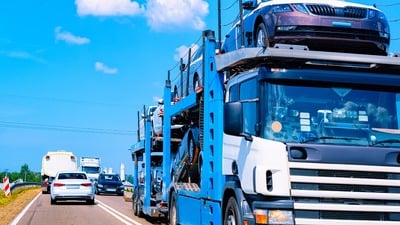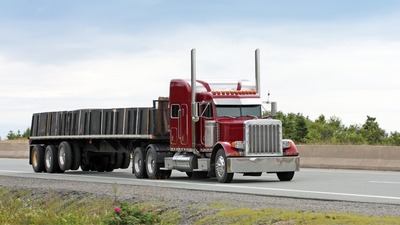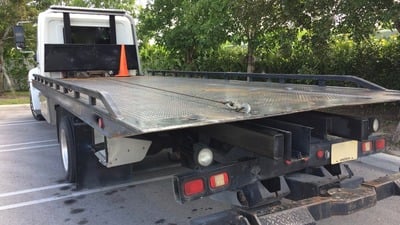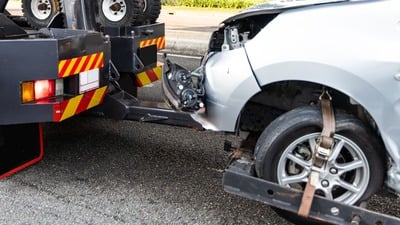Introduction to logging chains: Understanding their role in trucking
In trucking, especially when hauling loads like timber, logging chains are non-negotiable. These hefty chains ensure the logs stay put on the truck, making transport safe and efficient from the forest to the mill. Logging chains are built tough to withstand the weight and movement of logs. They come in different sizes and strength grades to suit various load requirements. Your choice of logging chain can make a huge difference in how securely and smoothly your cargo reaches its destination. In essence, these chains aren't just accessories; they are critical components for log transportation success. So, it's vital to understand their role in your trucking operations.
Different types of logging chains available
When it comes to hauling logs, not just any chain will do. There are three main types you'll come across: transport chains, high-test chains, and proof coil chains. Transport chains are the heavy hitters, designed to secure heavy loads like logs. They're sturdy, meeting the Grade 70 standard, which makes them a go-to for many truckers. High-test chains, on the other hand, are Grade 43. They're strong but better suited for somewhat lighter loads than what transport chains can handle. Then you've got proof coil chains. These are Grade 30, the least strong of the bunch, but they're more than enough for loads that don't push the limit too hard. Each type of chain has its place depending on the weight and size of the load you're moving. Choosing right means your logs get to where they're going without a hitch.
How to determine the right size and strength
Determining the right size and strength for your logging chains is crucial. It's not just about grabbing any chain. Think of it as fitting shoes; the right fit matters. First, look at what you'll be hauling. The weight and volume of your logs are key. Heavier, larger loads need stronger chains. Chains are graded by strength, from Grade 30, known as proof coil, which is mild in strength, up to Grade 120, which is ultra-strong and used for the heaviest industrial applications. Next, consider the chain diameter. Larger diameter equals stronger chain, but it also means more weight and possibly more hassle in handling. For most logging needs, a chain diameter ranging from 3/8 inch to 1/2 inch strikes a good balance between strength and manageability. Remember, picking the right chain size and strength isn't just about safety; it's also about efficiency. Too weak, and you risk accidents. Too strong, and you're wasting money and energy. Think smart, choose wisely.
The importance of material and construction in logging chains
When you're out there picking logging chains for your trucking needs, don't skimp on checking the material and construction. These aren't just chains; they're what stand between a secure load and a potential road disaster. First off, let's talk materials. Most logging chains are made of high-strength, durable steel. Why? Because steel can handle the heavy lifting and constant wear without giving up on you. But here's a pro tip: look for alloy steel. This stuff is the real deal, offering even more strength and resistance to wear and tear.
Now, construction – it's all about how those links in the chain are put together. Welded links are what you want. They're stronger and more reliable than those that aren't. Imagine hitting a bump on the road; welded links are less likely to open up and let you down. Also, consider the design. The Grade of your chain matters. For heavy-duty logging, aim for Grade 80 or higher. It means the chain is tested for higher lifting capacities and is up for the tough jobs.
Remember, these chains are what keep your load in place. Investing in the right material and construction pays off in durability and safety. Don't compromise. Your safety, and that of others on the road, depends on it.
Assessing your trucking needs: What are you hauling?
Before you dash off to buy logging chains, take a moment and think about what you're actually going to haul. Not all cargo is created equal, and your logging chains need to match the sheer weight and challenge of what you're moving. Starting simple: if it's lighter logs you're dragging, you might not need the heftiest chain out there. But if we’re talking colossal, ancient trees that have seen more winters than all of us combined, you're going to need something that won’t flinch at the sight of them. Strength and durability are key. Chains are rated by grade. The higher the grade, the tougher the chain. For light to moderate hauling, Grade 43 might do the trick. However, if you're in the big leagues, moving hefty loads across rugged terrain, aim for Grade 70 or even Grade 80 chains. These grades can handle more pressure and are less likely to give under the strain. Remember, it's not just about getting from A to B. It’s about getting there without your load turning into an unplanned roadblock. Judge your needs, pick the right grade, and keep things moving smoothly.
Safety considerations when choosing logging chains
When it comes to logging chains, safety is not just important, it's everything. Selecting the right chain ensures not only the safety of your cargo but also the safety of everyone on the road. First off, check the strength rating of the chain. It has to match or exceed the weight of your logs. A chain too weak can snap, causing accidents. Also, look for chains with a high-quality finish, like galvanized or chrome, to prevent rust. Rusty chains are weaker and more likely to break. Make sure the links are uniform and without defects; even a small flaw can significantly reduce a chain's strength. Lastly, always inspect your chains before use. Wear, tear, and damage can happen anytime, and spotting issues early can prevent dangerous situations. Safety should always be your top priority when choosing logging chains.
Maintenance tips to extend the life of your logging chains
To keep your logging chains in top condition, regular maintenance is a must. First, always clean your chains after use. Dirt, debris, and moisture can lead to rust and weaken the chain over time. Simply washing them with water and a mild detergent can do the trick. Dry them thoroughly because any leftover moisture can cause rust. Next, lubricate the chains. This reduces friction, making them smoother to use and helps in preventing rust. Use a quality chain lubricant, not just any oil. Check for any signs of wear or damage regularly. Look for cracks, worn links, or any distortion. If you find any, replace that section or the whole chain. It’s not worth the risk of a chain snapping. Lastly, storage plays a big role. Don’t just toss them in the back of a shed. Hang them up or lay them flat in a dry, covered area. By following these simple steps, your logging chains will last longer, saving you money and keeping your operations running safely.
The role of accessories: Binders and tensioners
Accessories like binders and tensioners aren't just add-ons; they're essentials in the logging chains game. Here's the deal: binders, also known as load binders, lock everything down. Imagine you've loaded your logs, and now, you gotta ensure they don't dance around while you're driving. That's where binders come into play. They come in two flavors - lever and ratchet. Lever binders use leverage to tighten the chain and are quicker to apply. Ratchet binders, on the other hand, use a ratcheting action to tighten. They offer more control and are safer because they reduce the risk of snapping back.
Now, let's talk tensioners. These guys make sure your chains maintain the right tension. You don't want your chains too tight or too loose. Just right. Incorrect tension can lead to chain or load damage, and nobody wants that.
In simple terms, without binders and tensioners, securing logs would be like trying to herd cats. They keep everything tight and right. Whether you're going for lever or ratchet binders, make sure they match your needs and don't skimp on quality. As for tensioners, keeping an eye on that tension will save you loads of trouble down the line. Remember, secure logs mean safe roads.
Real-life scenarios: Choosing the right logging chains for common situations
When you're in the logging business, picking the right chains for your truck is not just about strength; it's about knowing what's best for the job at hand. So, let's break down what you really need in some common scenarios. Picture this: you're loading up dense hardwood logs. You'll need a chain that's not just strong but also resistant to wear and abrasion. Go for Grade 80 or 100 chains. They're tough and can handle the load without breaking a sweat. Now, imagine you're working in wet conditions a lot. Rust can be a real enemy here. Stainless steel or galvanized chains might just be your best bet. They stand up to moisture better and resist corrosion, making them last longer. And what if you're always on rough terrain, bouncing around? A chain with a high shock load capacity is crucial. Look for alloy chains that can take the bumps and still keep those logs secure. So, remember, it's not just about getting the beefiest chain out there. It's about matching the chain to the job. Dense woods? Go durable. Wet conditions? Think corrosion-resistant. Rough rides? High shock load capacity. Get the right chain, and keep those logs moving safely and efficiently.
Conclusion: Making an informed decision on logging chains
Choosing the right logging chains for your trucking needs is crucial. It's not just about picking any chain. You need a chain that's strong enough to handle the load and durable enough to withstand the rough conditions of logging roads. Remember, a good logging chain not only secures your cargo but also ensures the safety of everyone involved—drivers, loaders, and other road users. Consider the type of logs you're hauling, check the grade of the chain, and always opt for quality. It might cost a bit more upfront, but a reliable logging chain pays off in the long run by avoiding accidents and damage to your cargo. Your choice should be guided by practicality, safety, and efficiency. So, take your time, do your homework, and choose wisely. Your logging operation depends on it.





